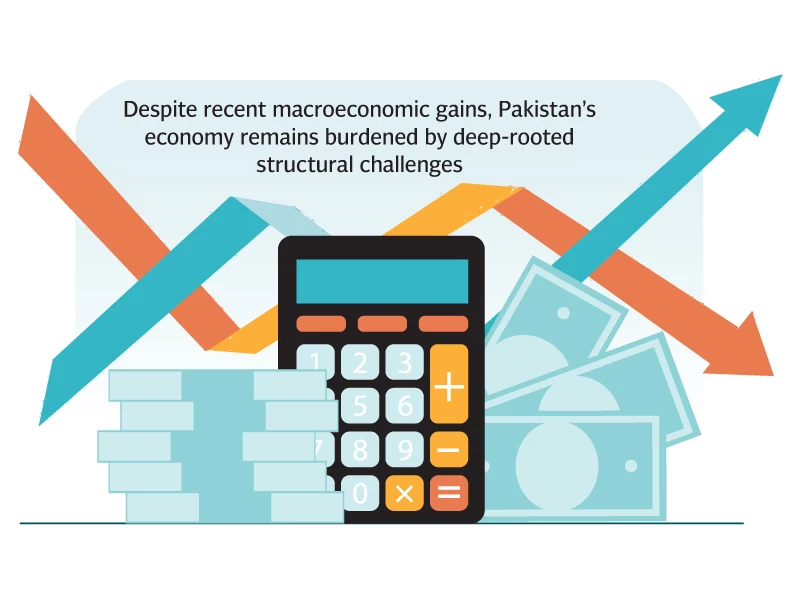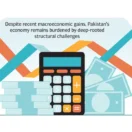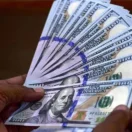By Rashid Amjad
Published in DAWN on June 25, 2021
THE good news — though dampened by continuing high inflation — is that the economy is showing distinct signs of moving out of the deep downturn caused by the Covid-19 crisis, and is generating growth momentum and rising business confidence. The challenge now is to ensure that this economic upturn is converted into not just sustained and higher growth, but also inclusive growth that generates jobs with rising wages and incomes.
Experience suggests that the odds are stacked against it. Over the last three decades, successive governments have raised hope, only to have it dashed by the very policies they have followed to stimulate growth. What is the government doing differently this time to avoid a similar outcome?
To start with, economic policymakers have been prudent in setting for next year a modest growth target of 4.8 per cent against the estimate of 3.94pc this year. This should allow Pakistan to avoid some of the pitfalls of the past and grow at a pace at which macroeconomic indicators are carefully monitored and the overall goal of growth with macroeconomic stability maintained.
But even this modest target has set alarm bells ringing in some quarters on two counts. The first is that even this growth rate will raise our current account deficit to unsustainable levels due to far higher corresponding growth in imports, even with the continuing high level of remittances, especially if oil prices continue to rise as expected.
The second concern is that the stimulus provided to accelerate growth rests heavily on increasing government development expenditures significantly, both at the federal and provincial levels. To meet these, the government has set for itself an ambitiously high revenue target, which critics believe will be difficult to achieve. If not met, this could further push up the already high fiscal deficit of 6.4pc set for next year.
Economic policymakers have been prudent in setting for next year a modest growth target.
Let us address the concerns over the reappearance of the feared twin deficits with the seriousness they deserve.
To start, there are some newly inbuilt stabilisers already in place as part of the government’s policy reform measures to correct for macroeconomic imbalances as they arise. The most important of these is a market-driven exchange rate that should come into play — albeit at a price — if the current account deficit begins to widen, for then the exchange rate will depreciate and make imports more expensive and exports cheaper. This will help reduce the trade deficit.
For this corrective mechanism to work, the State Bank must be given freedom to adopt the necessary monetary and exchange rate corrective policies as the economic situation demands. Indeed, the success of ensuring a smooth transition to higher growth will rest critically on the State Bank being allowed — especially by the finance and planning ministries — to play its due role. It will also assure the IMF that the government is committed to ensuring macroeconomic stability in its quest for higher growth and lower inflation.
Our economic policymakers are, of course, aware that the market-driven foreign exchange rate mechanism cannot be the sole defence against a widening trade deficit, given our historically low export price elasticity. In addition, it could trigger rising inflationary pressures if the exchange rate were to depreciate significantly.
The budget has, therefore, introduced many important reforms to boost and diversify export growth, the most prominent of which are to remove or drastically reduce import duties on raw materials that feed our major exports. This should make exports more competitive and domestic industry more efficient. Additional measures include a fuel subsidy to put fuel costs at par with our competitors as well as the timely refund of import duties and sales tax on imported inputs. These measures are not just restricted to our traditional cotton-related exports, but also to the rapidly growing IT sector, the high-potential pharmaceuticals industry, light engineering, leather products, and tyres.
If China could now join this export thrust by transferring its labour-intensive export industries to the industrial zones set up under CPEC, it could finally move the economy onto an export-led growth path.
These government support measures are already evident in rising business confidence, with a large increase in new investment, which is, in the end, the surest way of ensuring higher and sustainable growth.
Turning now to the other twin — the fiscal deficit. The targeted 6.4pc is already high and therefore meeting the Rs5.8 trillion tax target (an increase of around 1pc of GDP) becomes critical.
Reliance is being placed here on higher growth (and unfortunately inflation), new technology to track incomes and sales and, through it, on enlarging the tax net and bringing new undocumented sectors within its ambit. But most importantly, it is my firm belief that people’s willingness and capacity to pay taxes is much higher in a growing economy and amid rising incomes than in a stagnant one. Add to this a no-nonsense results-oriented finance minister and the IMF on our tail, and there is every hope that the FBR — given its very creditable performance last year — will deliver.
On the third pillar of inclusive growth, the Ehsaas programme has built a reputation on well-targeted and timely delivery of direct income support to those most in need. But there is growing concern that the government is spreading itself across too many new initiatives and that some of these need more careful thinking to ensure results.
Finally, if there is a weakness in its proposed growth strategy, it is that the government’s support policy measures for agriculture need closer coordination and integration between the federal level (research and overall incentives structure) and the provinces (direct support, including extension services). If food inflation is to be controlled and food security ensured, growth in agriculture is critical.
The budget, on balance, has launched the economy in the right direction and the government now needs to display the action and will to implement it.
The writer is professor of economics at the Lahore School of Economics and former vice chancellor of the Pakistan Institute of Development Economics.




